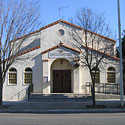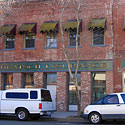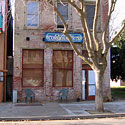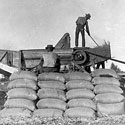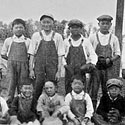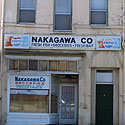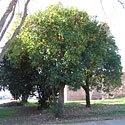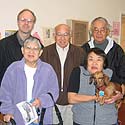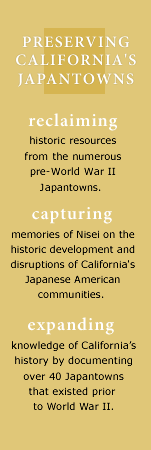 |
MarysvilleIn the early 1900’s, Marysville’s "Japanese Town," situated next to Chinatown and adjacent to the Yuba River levee, provided a nucleus for the Japanese ranch laborers and migratory agricultural laborers. The town quickly grew to contain 40 small businesses and more than two-thirds of the Japanese residents of Yuba County concentrated within the city of Marysville, just prior to the war. Settling into agriculture, some Japanese became independent farmers in orchard crops, rice production, and vegetable farming, with family members providing the arduous "stoop labor." Today, only a handful of Nikkei remain in orchard and row crop farming. ›› CLICK TO ENLARGE.
PROFILES
| ||||

With the rapid growth of the community, this hondo (temple) was built in 1938 on property then owned by the Buntaro Nakamura family at the corner of B and 2nd Street. The nearby Japanese Community Hall, built in 1931, had previously served both religious observance and social gatherings. The church buildings provided refuge for evacuees after the war and again housed nearly 100 Sutter County families after the levee broke in 1955. The Japanese Community Hall and Japanese Language School next to it on B Street were closed in 1969 and 1970.
A Japanese rock garden and koi pond, designed by James Tomita, was created in 1969; and a multi-purpose hall and education building was built adjacent to the temple in 1971. Marysville Buddhist Church remains a community gathering place for those returning to the Obon Festival in August each year.

Miner’s Park, a vacant hay lot owned by the city in East Marysville, was leased to the Japanese community. Using hoes, water, sweat, and know-how, the grass field was groomed, and infield cleared. The fans pooled together to build a wooden grandstand for a 100 fans and hosted games against neighboring communities such as Sacramento, Stockton, Loomis, Vacaville, and Walnut Grove. In 1935, they were thrilled to host a game against the visiting Tokyo Giants.
The photo shows the local Marysville team at Miners Park in 1924. Courtesy of California State University Sacramento.

Yamamoto Boarding House was located in the current Deatsch Insurance building, with Hiraoka Boarding, Hiraoka Co., and Tamamoto Insurance Agency two doors to its right on 1st Street. These buildings remain amid the historic fabric of Chinatown. The historic Bok Kai Miu (Temple) at the end of the street, built in 1880, is one of the oldest Taoist temples in California still in operation.

Nakagawa Store was opened in the early 30’s, and remained in operation until 2004, selling fish, tackle, and Japanese food. A dressmaking shop was housed in the building prior to the war. The Nakagawa family, like half of their pre-war Nikkei neighbors lived in their place of business.

Kai’s Place, located on C Street, was an ice cream parlor operated by Mr. Maruyama and frequented by many Japanese families. Members of the family also owned Maruyama Boarding house, located around the corner on 1st Street, which is now the Szechwan Restaurant.

The flourishing grapefruit tree and remnants of a cement goldfish pond are the only traces on the grounds of the former Toyo Hotel, a 3-story boarding house, operated by the Sasaki family. Formerly the Riddell Community Hospital, the building was an ideal set-up with rooms to rent on the upper floors. The 1st floor was used for the family home and gambling parlor. Mazie Sasaki remembers the roof would open up for the "sunray" machine used to fix people’s body ailments.

Rice farming began in Colusa County in 1911 and rapidly expanded, attracting hundreds of investors and laborers. Many Japanese rice farmers prospered at that time. Today, Koda Farms is the only rice production in operation by a Nikkei proprietor in California. For a history of California’s oldest-continuously owned and operated rice farm in California, located in Sutter County, go here.
This 1935 photo shows a man pitching rice into a cutter while another worker rests atop the sacks of hulled rice. Courtesy of California State University Sacramento.

Nisei members of Marysville Buddhist Church shared with us their childhood recollections of pre-WWII town life. In the photo (clockwise from front right) are Miyoko Nakahara (with dog), Mazie Sasaki, Ben Pease (cartographer), Terry Manji, and Sadao "Sud" Itamura. After a lovely visit and sharing of local resources with the group, Terry and Sud took a stroll with us through former Japantown. Terry had many recollections of his boyhood, playing baseball, throwing rocks, eating ice cream. Sud, who provides an important history of Marysville in his 1971 dissertation, remembers returning annually and staying at a local boarding house when his father came to work during harvest season.
